Expedition to Northern Vietnam, October 2019
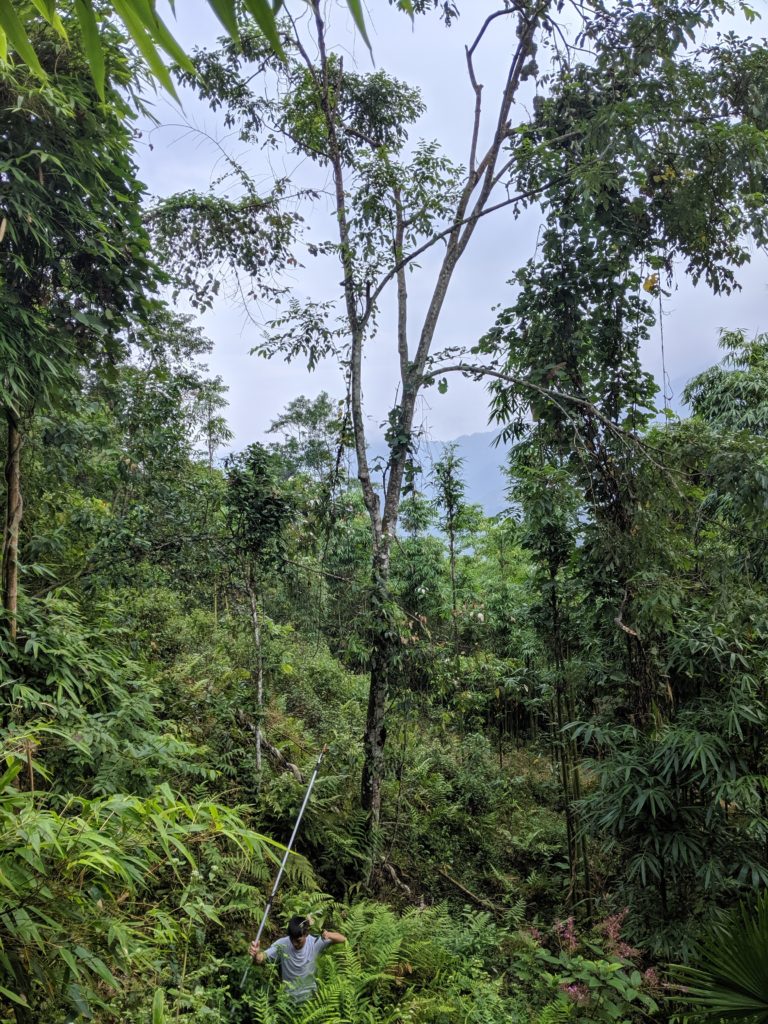
Participants (UK)
Richard Baines: Expedition leader and Curator of Logan Botanic Garden
Will Ritchie: Curator of The National Botanic Garden of Wales
Angela Cano: Assistant Curator of Cambridge University Botanic Garden
Andrew Luke: Head Gardener at Wrest Park
Hazel France: Senior Horticulturist at the Royal Botanic Garden Edinburgh
Vietnamese Counterparts from the Institute for Ecology and Biological Resources (IEBR)
Dzu Van Nguyen: Expedition leader and Botanist focussing on Araceae
Thanh Trinh Xuan: Horticulturist at Me Linh Station for Biodiversity
Toan Le Chi: Taxonomist working with DNA barcoding, focussing on Loranthaceae
Manh Nguyen Hung (aka. Doctor Mike): Researcher in plant ecology, biodiversity and conservation
Tay Con Linh Mountain, Ha Giang Province, 16th-19th October
Having completed one 3-day expedition (read Will Richie’s article here) and a number of day trips, Tay Con Linh was to be our next major collecting trip on our month-long expedition in the mountains of northern Vietnam.
Tay Con Linh is the highest peak in Northeast Vietnam at 2419m, part of a granite mountain formation called the Viet Bac Massif (Sterling et al., 2006). We had travelled by minibus the previous day from the mountain town of Sapa in Lao Cai province, arriving late into the town of Ha Giang in Ha Giang province. We briefly explored the town in the morning in order to find ourselves some breakfast and coffee. This was a smaller, sleepier town and noticeably much warmer and more tropical than Sapa due to the lower altitude. Ha Giang was supposedly surrounded by amazing rock formations, but they were hidden in cloud and as yet remained a mystery.
We set off in our minibus via the forestry service office to pick up our permits to enter the restricted border area with China, and a forestry officer who was to accompany us on our trip. We were now ready to head for the mountains. Our minibus driver for the whole expedition was Uoc, who runs the Mountaineer Hotel in Sapa. Lover of botany, all mod-cons and Celine Dion, he was to drop us off at a small village in the mountains where motorbikes would take us the rest of the way. It was a bumpy and beautiful bus journey through small villages, past streams and waterfalls, huge granite boulders and terraced rice paddies. The vegetation was lush, including huge palms, bamboos and Cyatheas. Uoc streamed the whole journey on Facebook live.
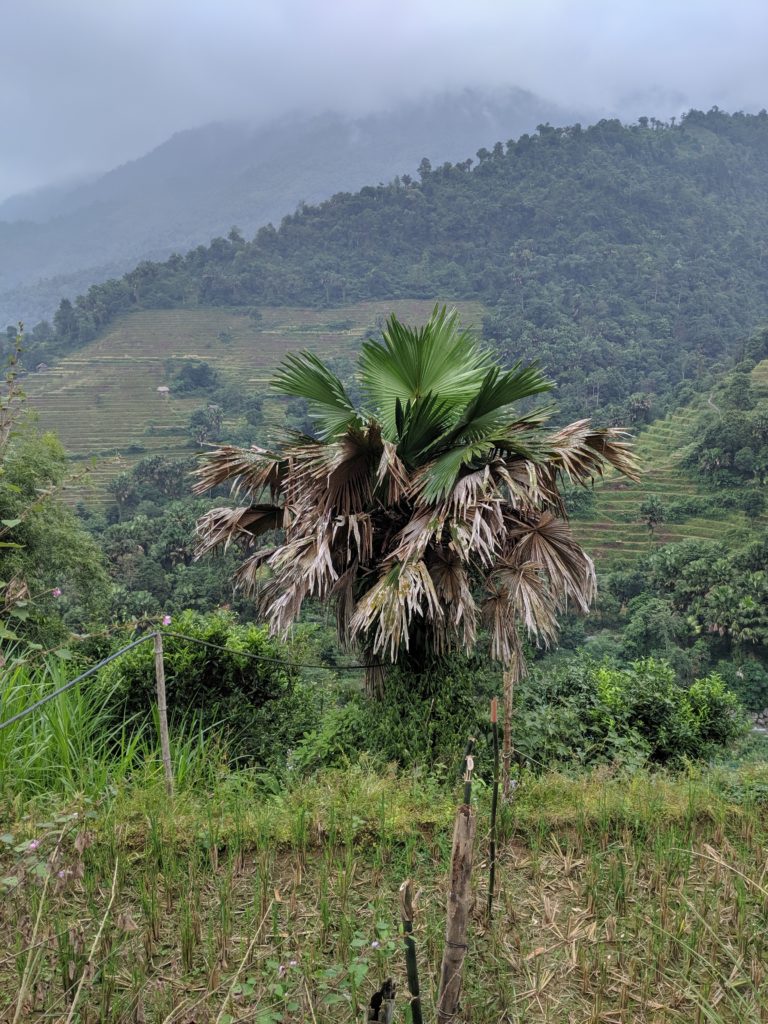
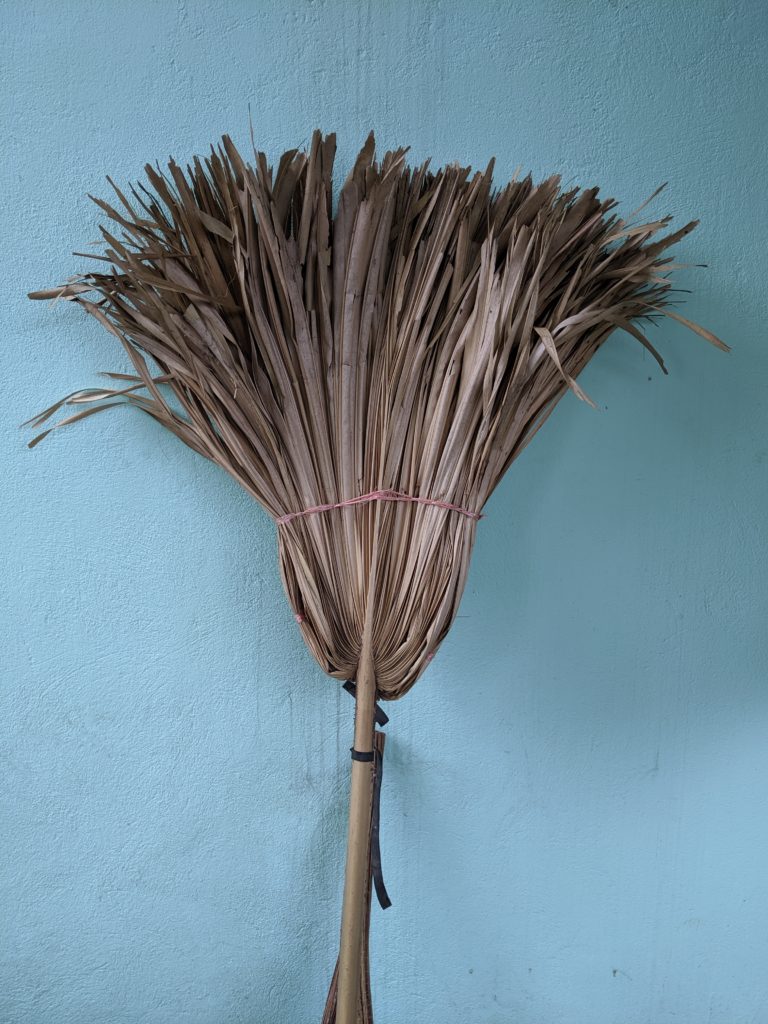
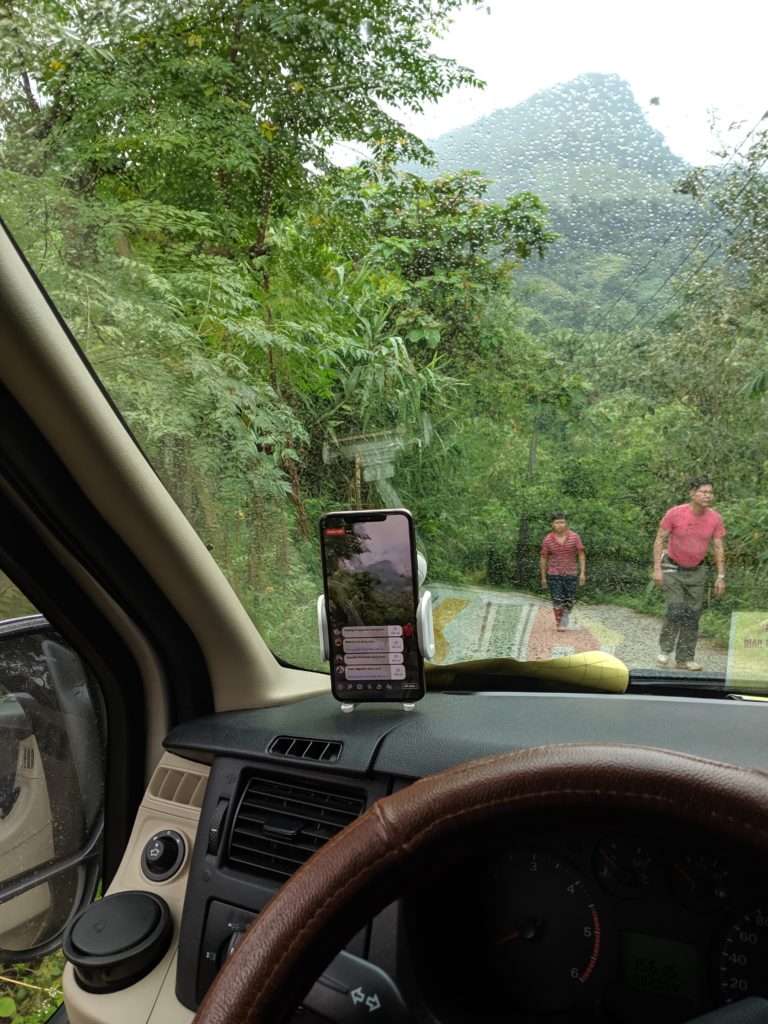
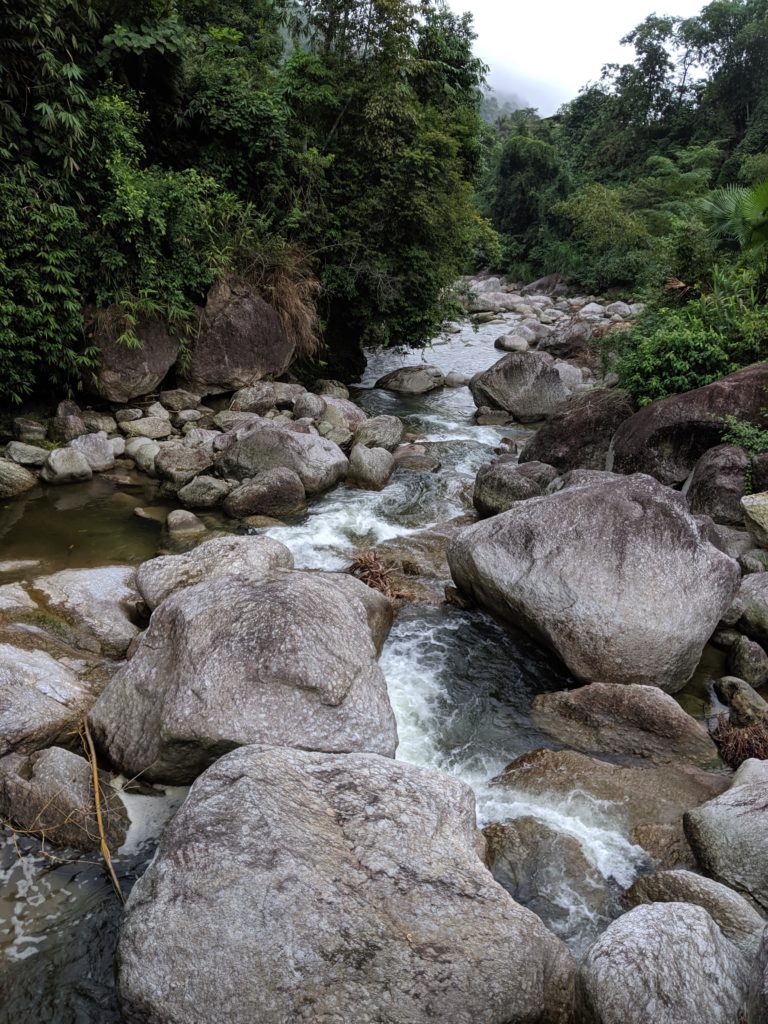
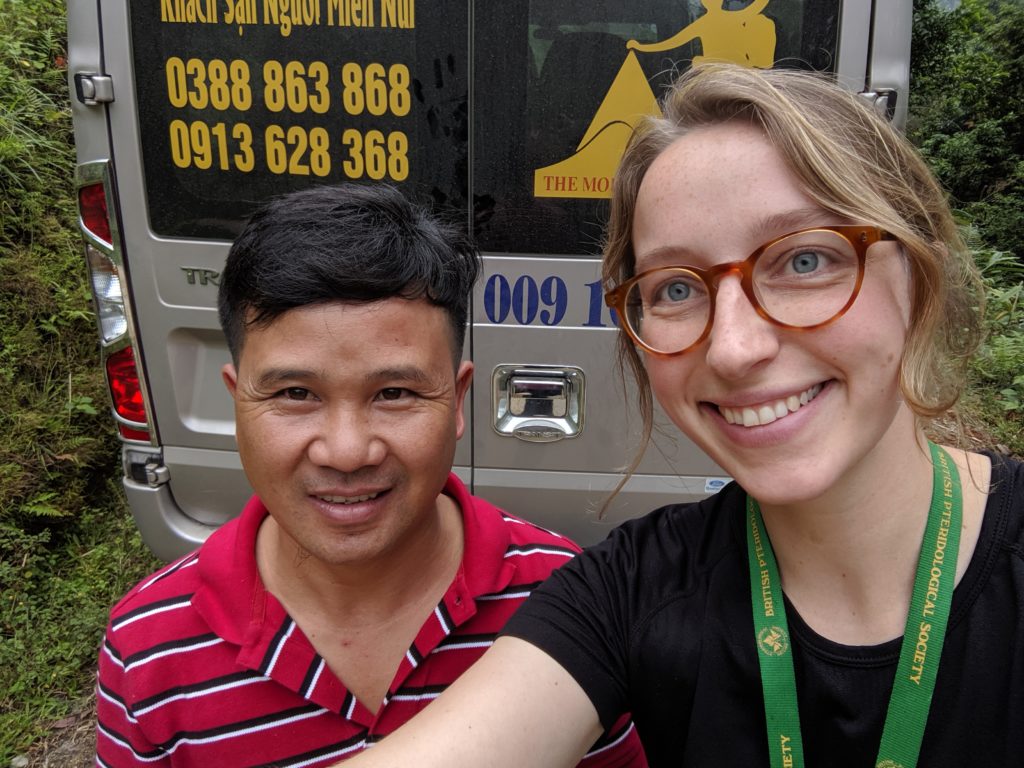
We wound our way up the mountain until the road petered out to a narrow motorbike track and the minibus could take us no further. We piled out with our gear and walked the last few hundred metres to the village where the motorbikes were to pick us up and take us to higher elevations. This short walk in itself was eventful, as we made collections of Camelia and Quercus and met a friendly praying mantis.
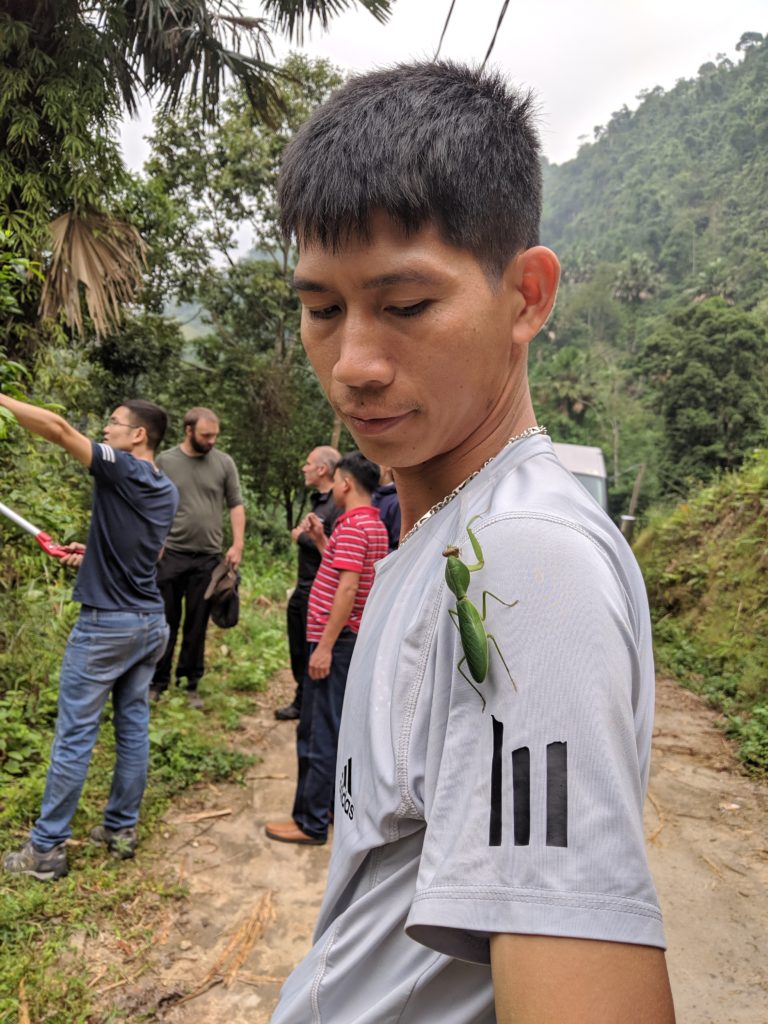
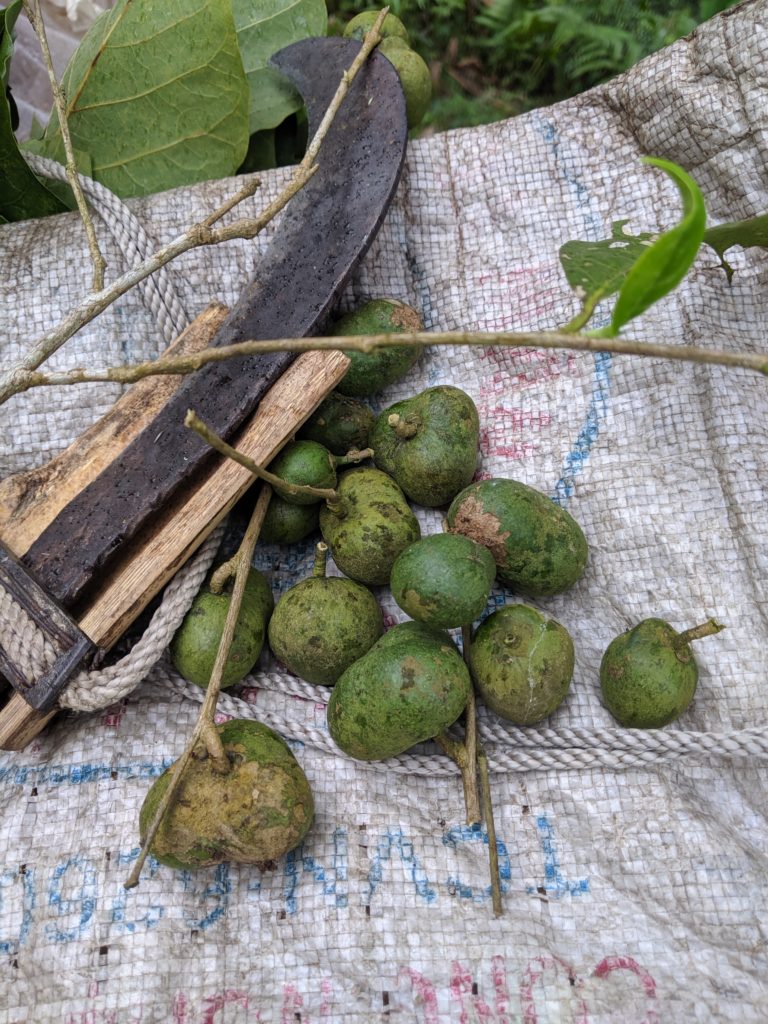
For every collection made we would take photographs of the plant in habitat, and close-ups showing diagnostic characters for identificaton. I used a small chalk board to document the collection number with the specimen photographs to keep track of what was what. We recorded essential data such as the elevation, GPS co-ordinates and information on the habitat and description of plant characteristics that would get lost in a dried, preserved herbarium specimen, eg. colours, smells etc. We then would take a section of leaf material to dry quickly in silica gel so that the DNA could be sequenced at a later date. Samples of each plant were collected for herbarium specimens. Ideally these would have fruits or flowers present so that it would be possible for experts to identify them to species level back in the herbarium. Due to the humid conditions, our samples were preserved using alcohol, rather than air drying them. We collected 2 duplicates of each collection, one for RBGE and one for the IEBR herbarium in Hanoi. We also collected living material, as this was a horticultural collecting trip. In a best-case scenario, we would be able to collect ripe seed. Where this wasn’t possible we would collect cuttings, tubers or rhizomes and transport them in Ziploc bags.
We soon arrived in the village but…. no motorbikes. It was therefore decided that we would collect what we could in the forest surrounding the village, stay there overnight, and hope that the bikes would arrive and that we could set off early the next morning.
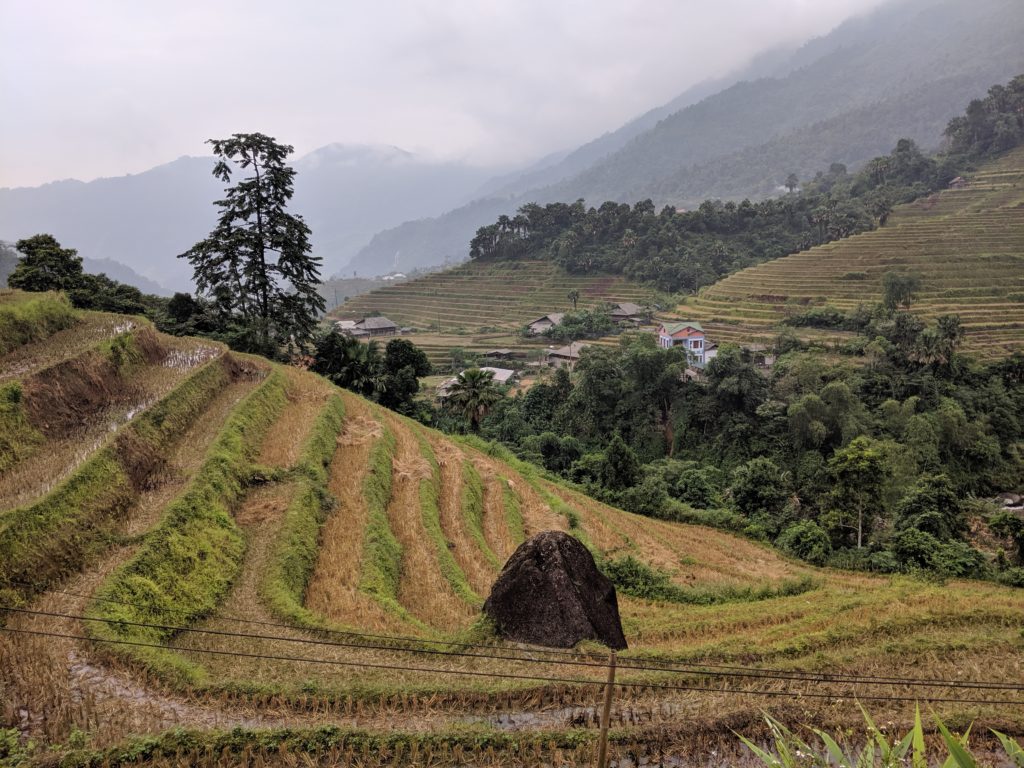
Our elevation was still low, 570m, so anything we collected here would be grown under glass in our respective gardens back in the UK. Although not our intended plan, we still made some good collections, including a Mussaenda (Rubiaceae), a few Aeschynanthus (Gesneriaceae) and a Lanonia dasyantha (Arecaceae) with seed. Angela who is an expert on palms was particularly happy with this find. As a small, understorey palm it will be a glasshouse friendly addition to the Victorian Temperate palm house at Edinburgh, where there is no risk of it trying to grow out of the top of the roof. Despite a few good finds, our proximity to the village and terraced rice paddies meant that the surrounding area was disturbed secondary forest dominated by huge bamboos.
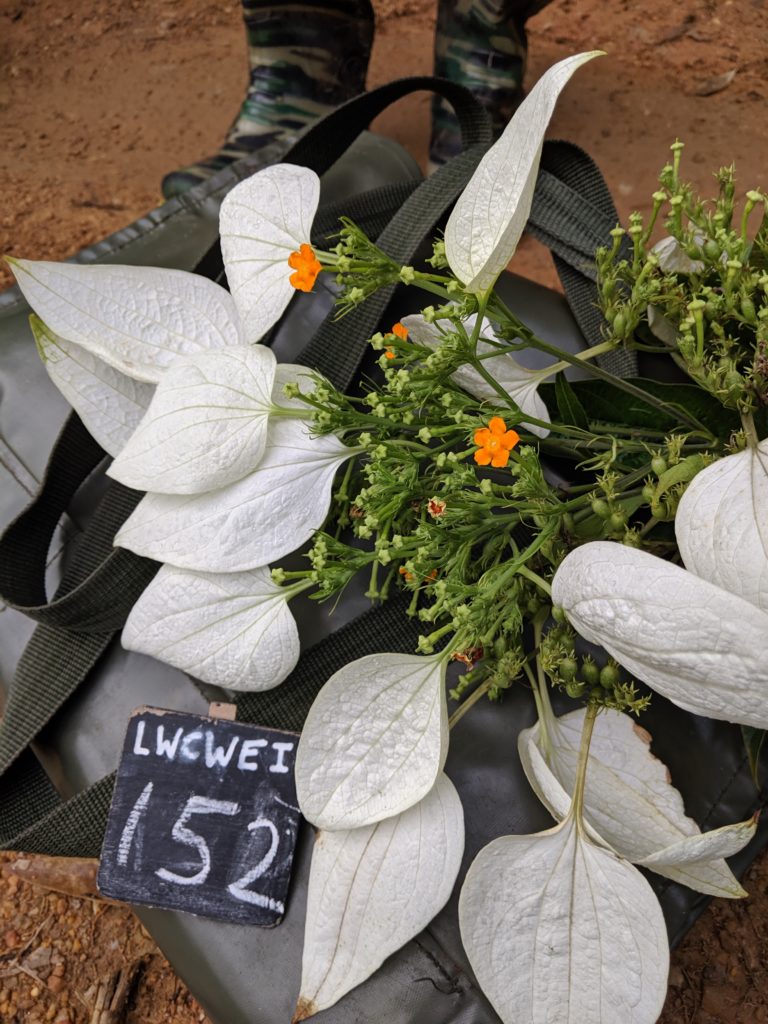
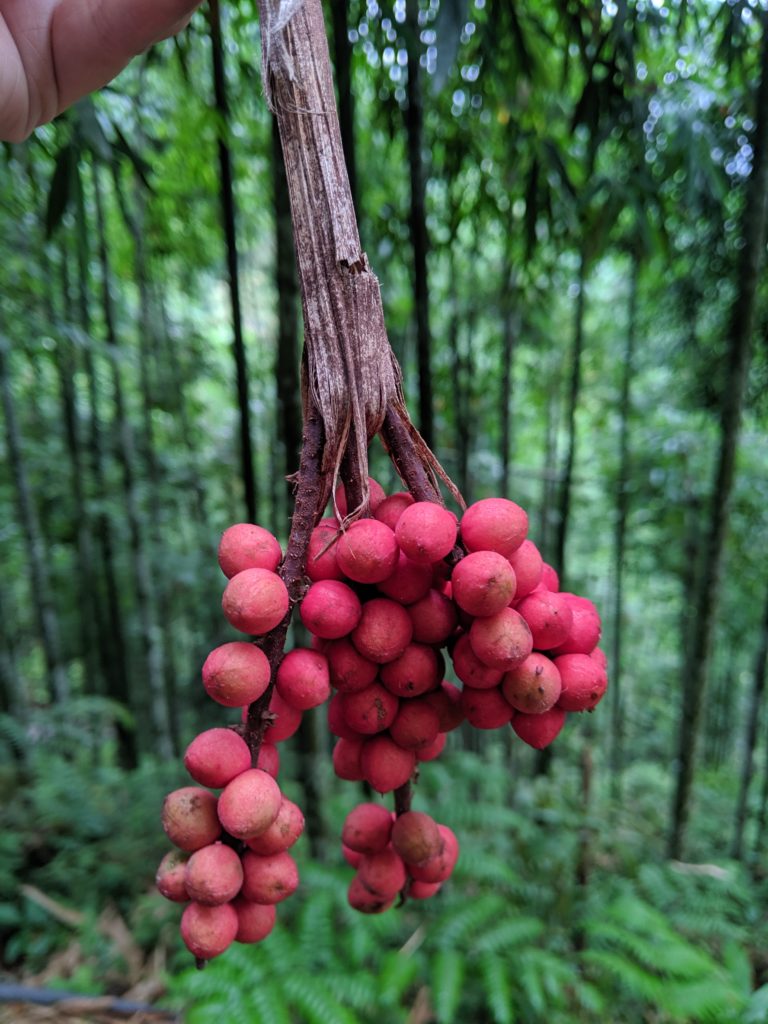
That night we ate a huge meal with some people from the village and slept in our sleeping bags on the floor of a building owned by the forestry service. One of our Vietnamese counterparts, Doctor Mike, taught me some Vietnamese, so I can now say “it’s delicious”, “goodbye” and “cheers”! There was also a hot shower, which was much appreciated.
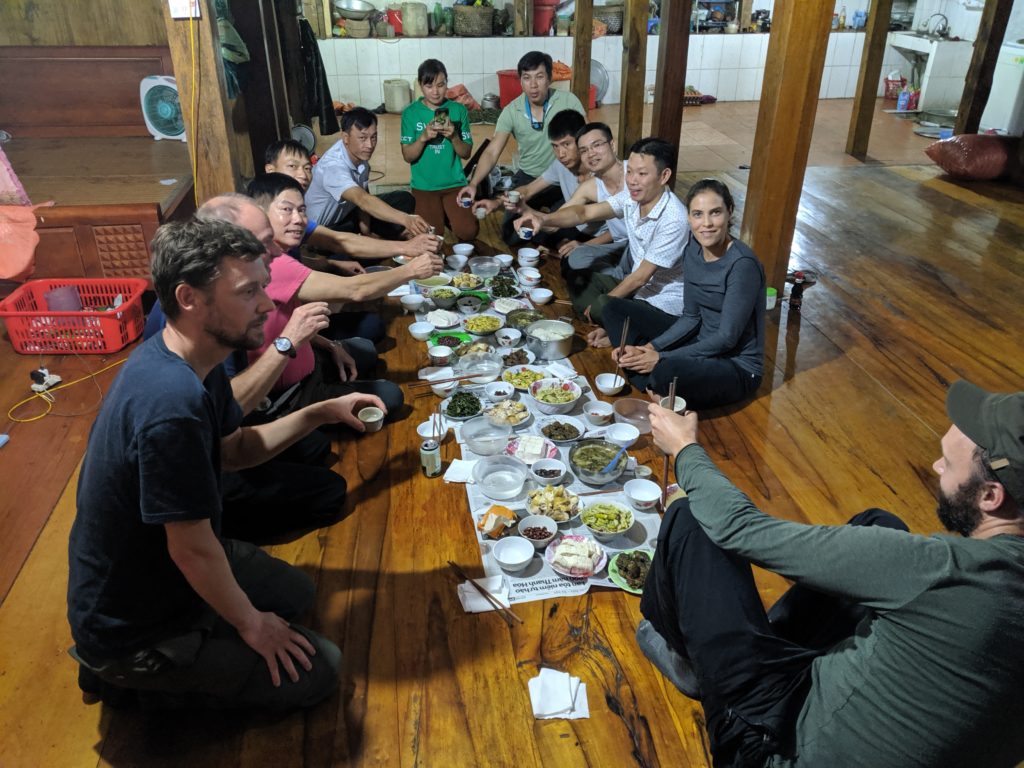
The next morning the motorbikes bikes roared up and we each clambered on the back on one, and we were off! There were five of us from the UK, four Vietnamese Counterparts, the forestry warden, and four local guides and porters. Fortunately, I had prior fieldwork experience of clinging on to the back of a motorbike over rough terrain, but this was something else. The steep, narrow track wove up the mountainside at some points with a steep drop down on one side. In other places we crossed small bridges the width of a motorbike tyre. The wet weather meant that the main problem was mud and the bikes struggled to make it through the thick, sticky terrain so us bulky passengers had to hop off and walk up the worst bits. Despite that, it was exhilarating and great fun. After a week of trekking up and down mountains on foot, I had no problem at all with the loud, bumpy motorbike alternative, however terrifying and uncomfortable.
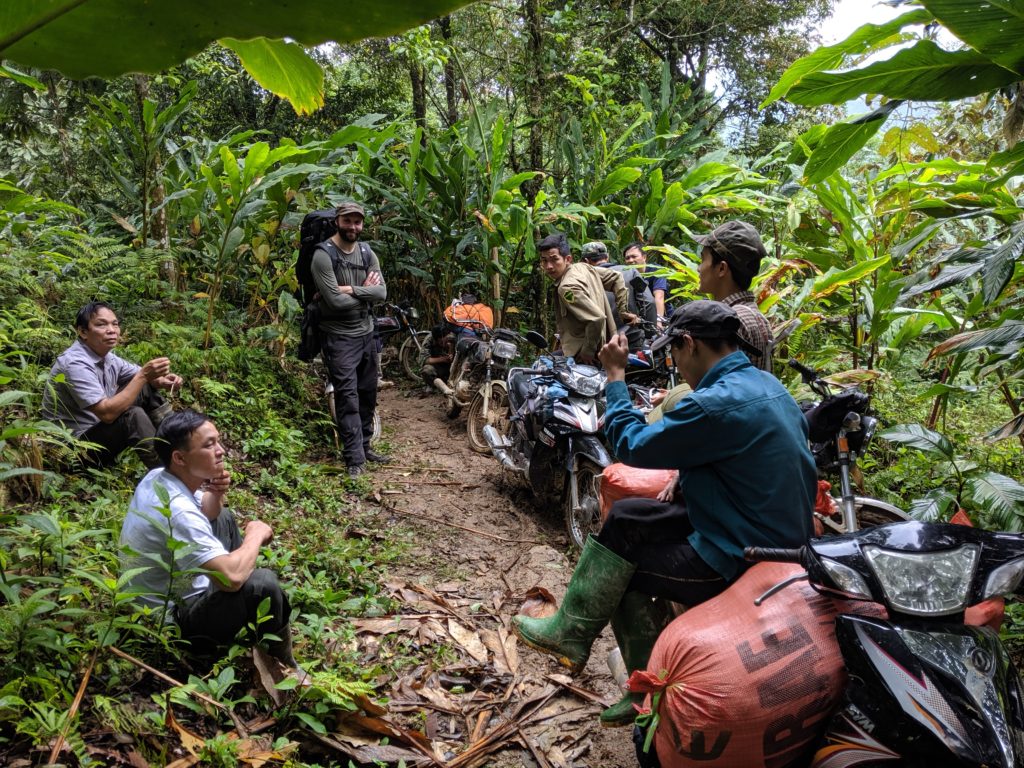
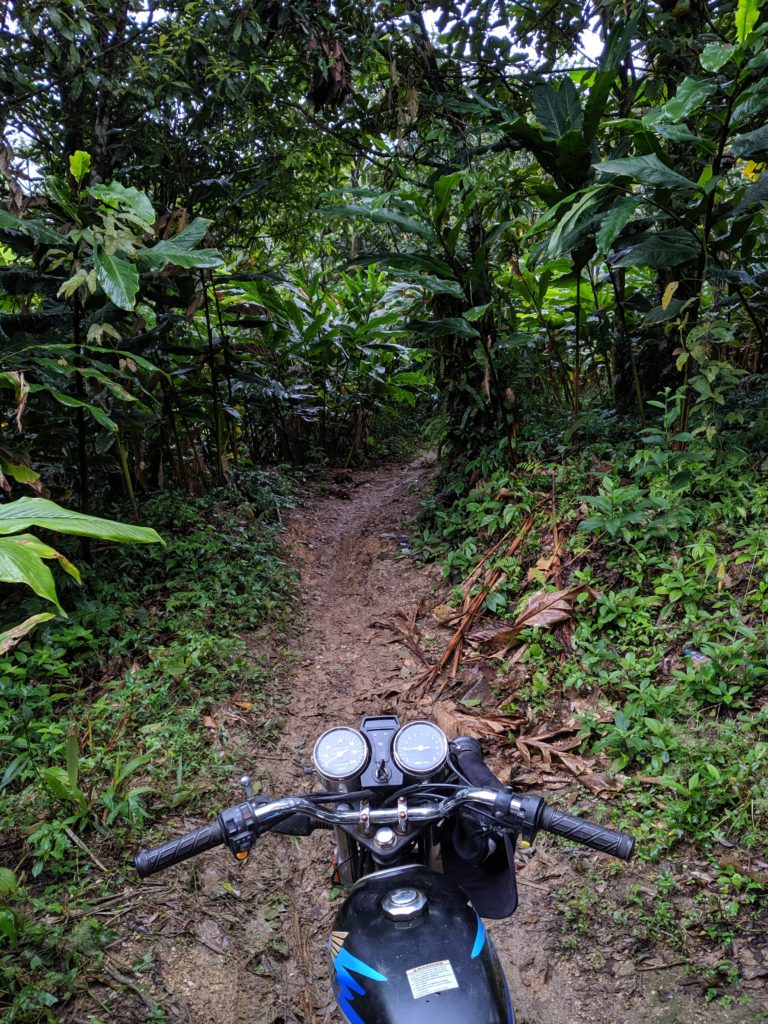
However, it was over with all too quickly. The plan, or so we had thought, was to get as high as possible up the mountain by bike, to where we could explore more temperate, high altitudes where there would be plants that we can grow outside in the UK and less forest disturbance. However, this route up the mountain meant that we could only get to 1370m by bike whereas we needed to be at around 2000m.
We didn’t have enough tents for all of us to make it to the top on foot as the plan had been to stay in a wooden shack. It was therefore decided that we would split into two groups. Angela, Will and I would stay around this elevation collecting subtropical plants and camp in a the shack. Richard, Andrew, Dr. Mike, Thanh and two local guides would head up to camp (with Dr. Mike’s 3-man tent and a tarp) as high as possible that night, make it to the summit the next morning and then head back down to our lower elevation camp, collecting along the way.
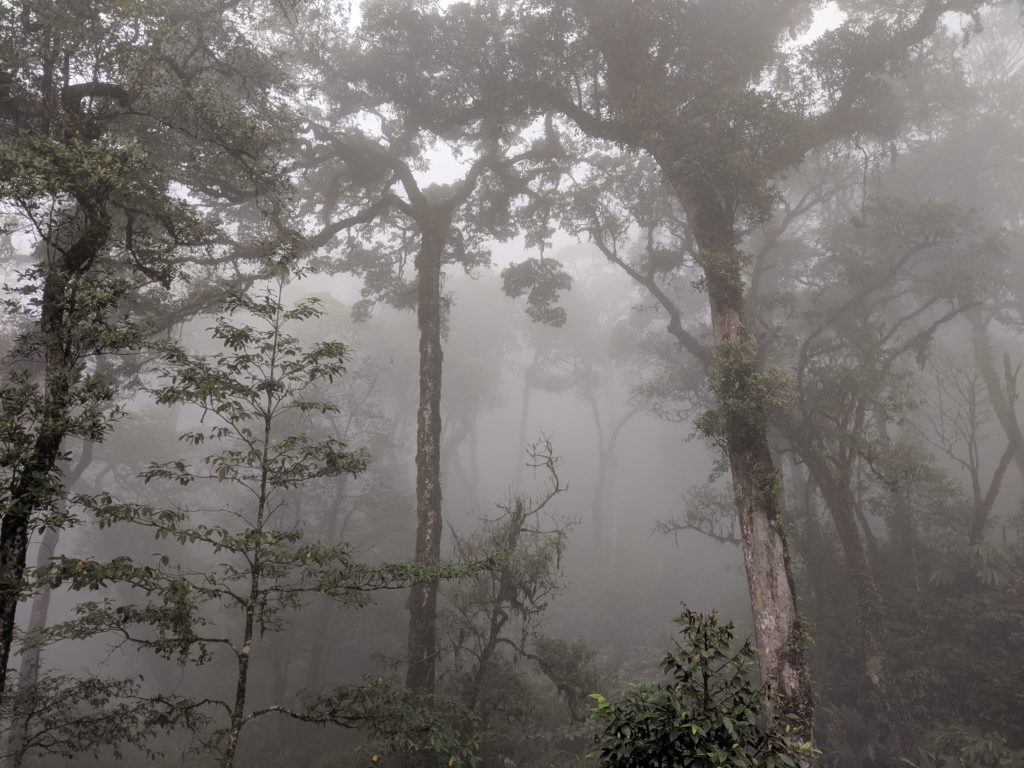
We set off up the mountain all together. For some of the way there were narrow tracks to follow, but for the most part our local guide led us up the steep mountainside, clearing a narrow path through the vegetation with a machete. Our group stayed together to an elevation of 1813m, where Richard and co. kept going up, and the rest of us headed back down. These mountains would be in cloud for most of the year, with constant high humidity. This is perfect territory for members of the Gesneriaceae family, begonias and ferns, all of which are key research groups at RBGE. Unfortunately, these are also perfect conditions for cardamom growing. Here, as on our previous 3-day trek around the Fansipan in Lao Cai province, much of the understorey vegetation had been cleared for the production of cardamom.
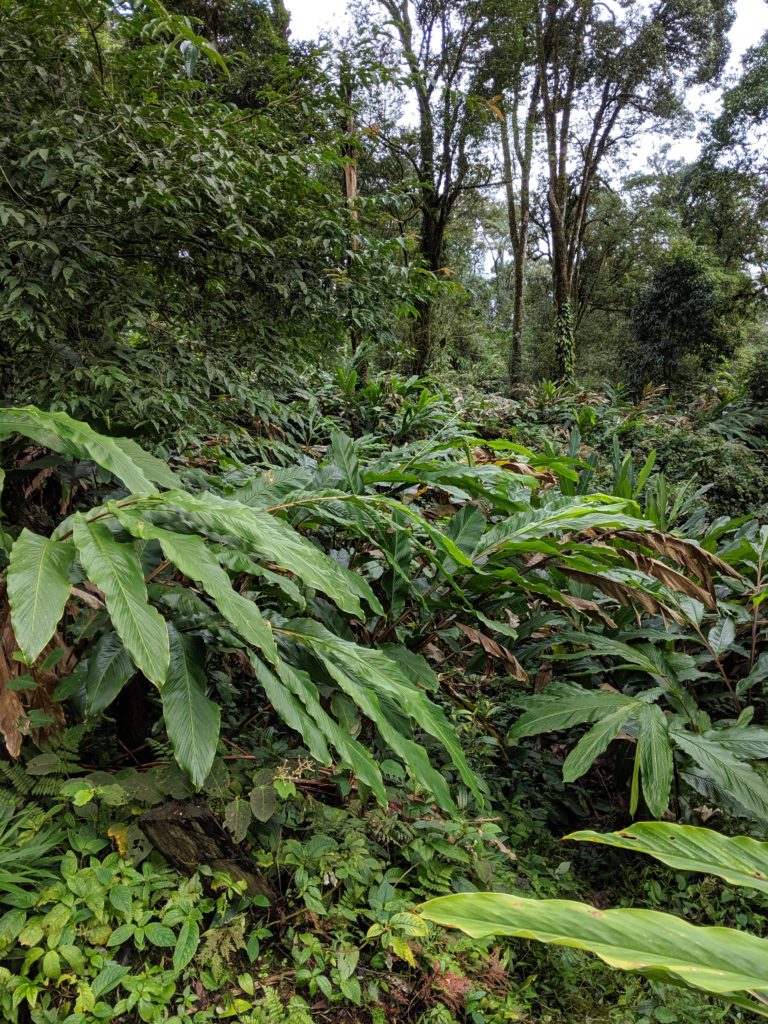
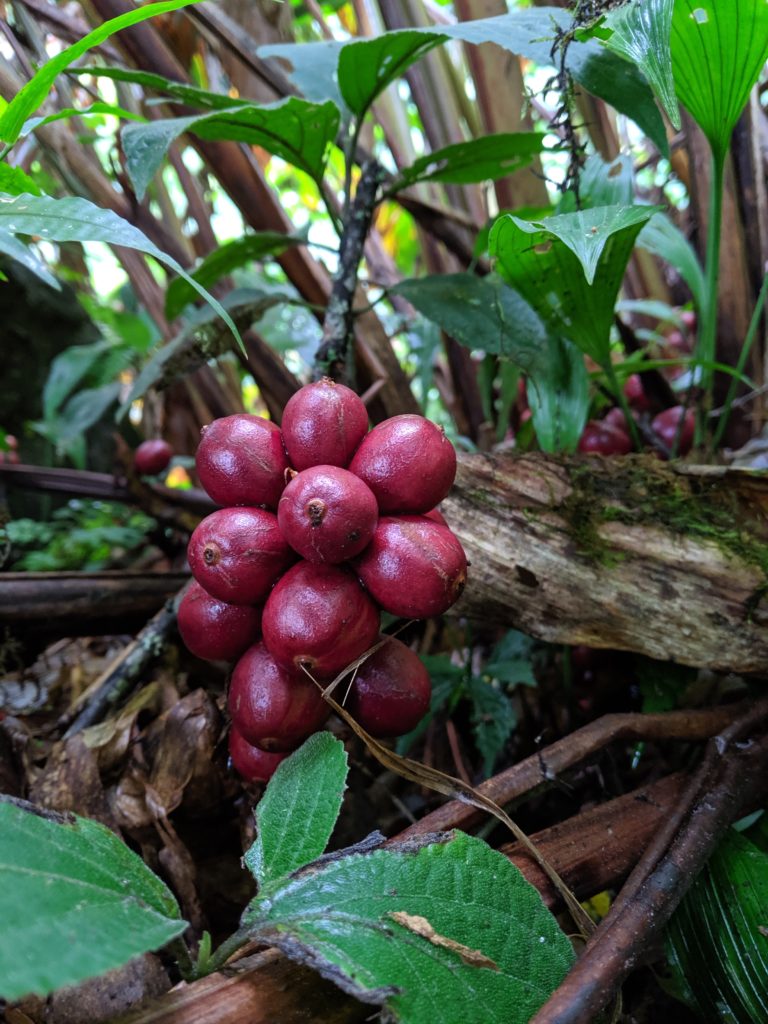
All cardamoms are members of the Ginger family, Zingiberaceae. Green cardamom that we are most familiar with in the UK is Elettaria cardamomum, native to Southern India. After saffron and vanilla, this is the third most expensive spice in the world (Singh et al., 2012). Another alternative used in food and for medicinal purposes is black cardamom, Amomum subulatum, native to the Himalayan foothills of Northeast India. (Singh et al., 2012). The species in cultivation in Northern Vietnam resembles black cardamom, but is most likely an equivalent species native to Northern Vietnam, Lanxangia tsaoko, known as Amomum tsaoko until last year (Mark Newman, Personal communication, 2019). It is planted as an understorey crop in high altitude, humid forests in areas cleared of existing undergrowth. Larger trees are felled if the shade is too dense. The disruption to the ecosystem is further compounded by the need to dry out the fruits after harvesting, which means cutting down small trees for firewood. We were there during harvest season and so saw bags and bags of it being collected and dried in racks adjacent to small wooden shacks throughout the forest. After drying, the cardamom is then sold across the border in China. With a rapidly growing population and small percentage of natural forest remaining in Vietnam, there are huge challenges in protecting biodiversity whilst also meeting the needs of rural communities and enabling them to make a living (Sterling et al., 2006).
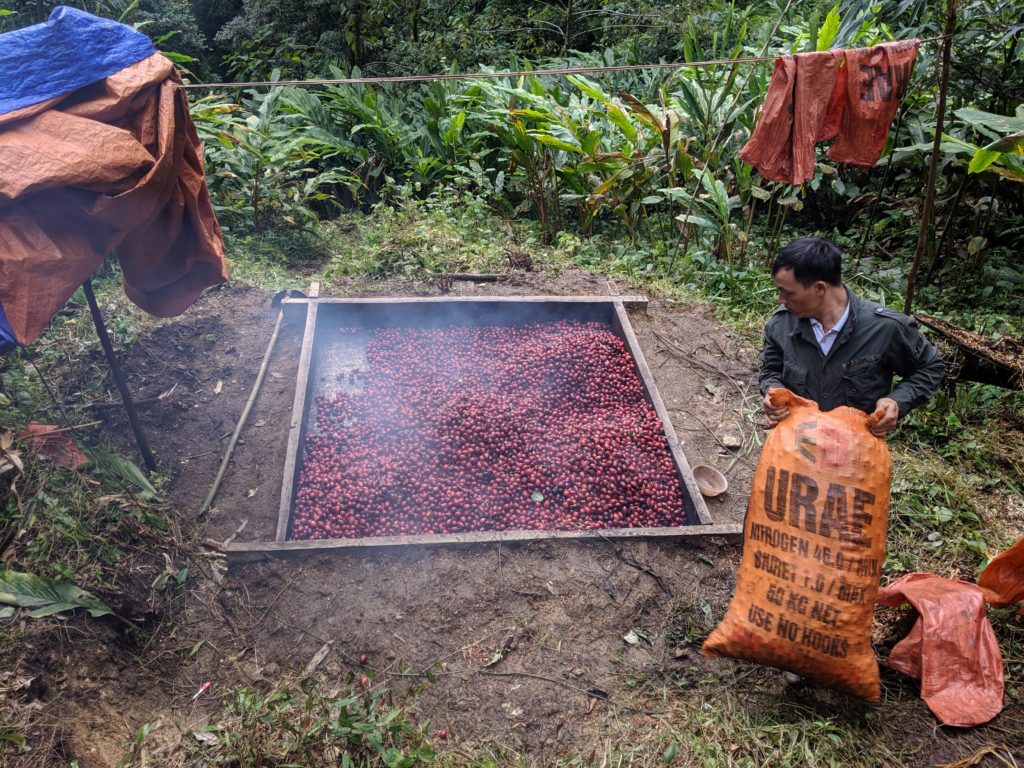
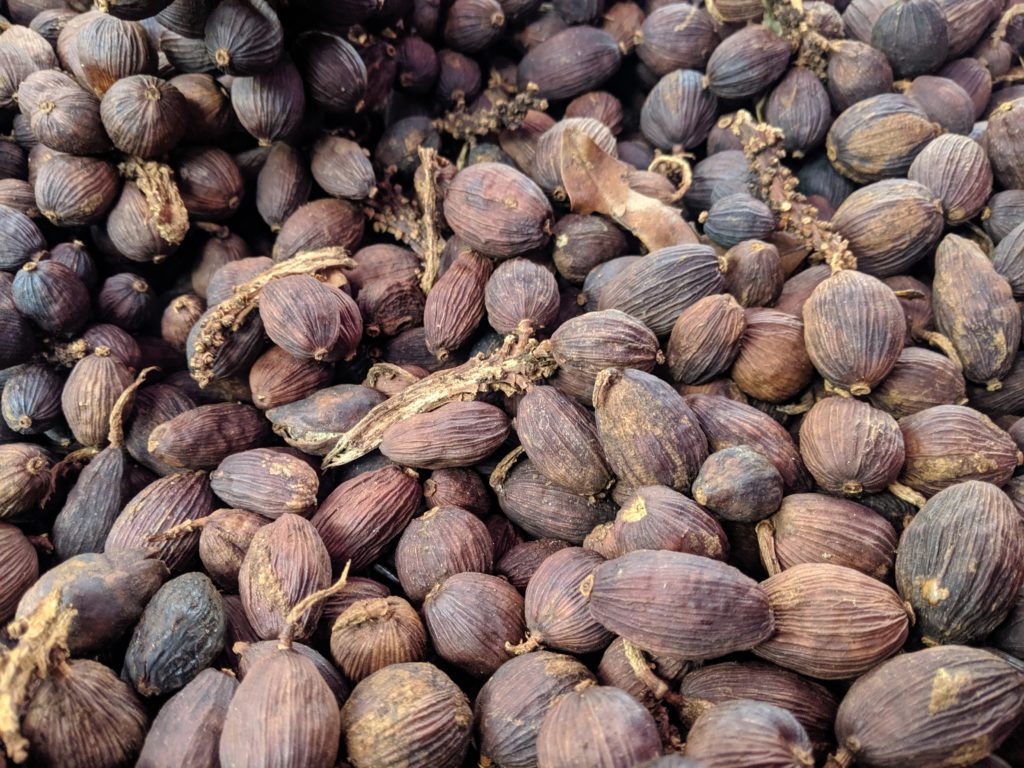
As we explored the subtropical altitudes of Tay Con Linh, we did find interesting plants but much of the forest was degraded and taken over by cardamom or bamboo. Small pockets of diversity gave an impression of what this forest would have been like in the past. The best habitat for finding things were fallen trees which could be covered in epiphytes, or on the banks of streams where the cardamom can’t take hold. One benefit of the cardamom is that its leaves are long and tough and the rhizomes so firmly anchored in the soil that we could use them as ropes to help climb up and down the slippy mountainside.
We headed back to our cardamom shack camp before dark and Chung, our local guide and Phuong, the Forestry warden made dinner. This meal unfortunately included one of the three live chickens that had been brought in a bag up the mountain and tethered outside all day. After dinner we were informed that Will, Angela and I would be sleeping out under a tarpaulin on the cardamom drying rack for the night! It had been used that day so was still warm, so turned out to be the perfect place to sleep on a cool, damp night in the mountains.
The next day we continued to explore the area around our camp, heading to another cardamom hut. We made 20 or so collections, including an Arisaema that Dzu, an expert in Arisaemas, thinks may be a new species. Lunch included bamboo shoots harvested from the forest and crushed magnolia fruits, a delicacy which had been bought in a market. I tried it and did get a hint of the aromatic flavour of the magnolia but they were ground up with chillies which were much too spicy for me!
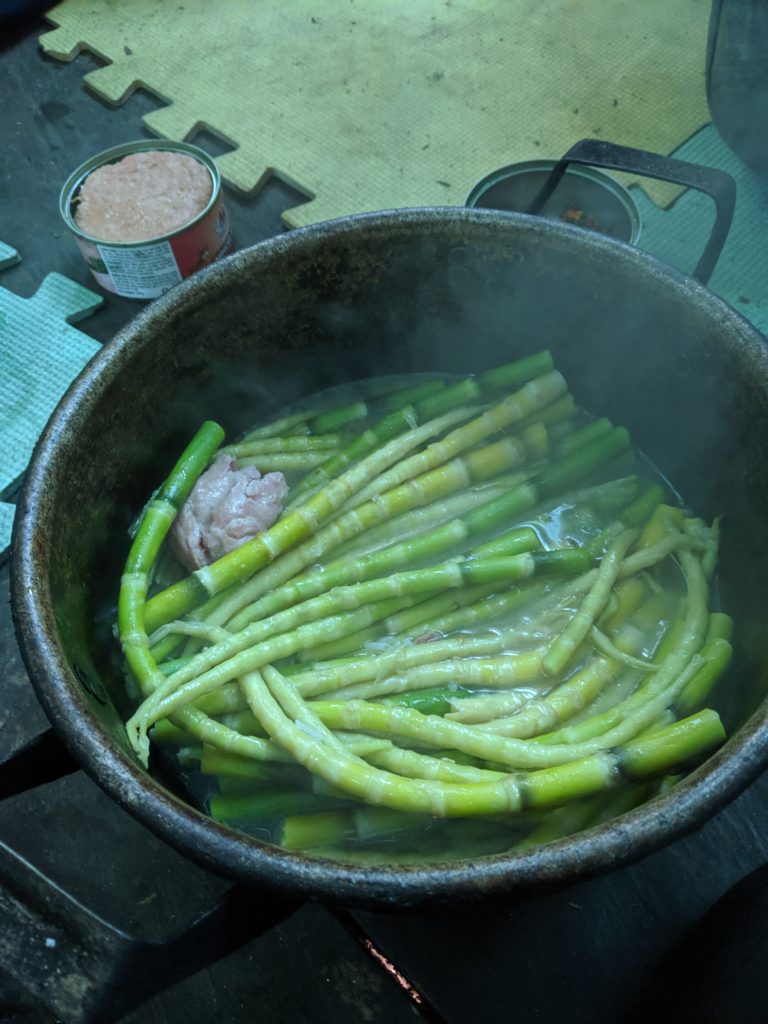
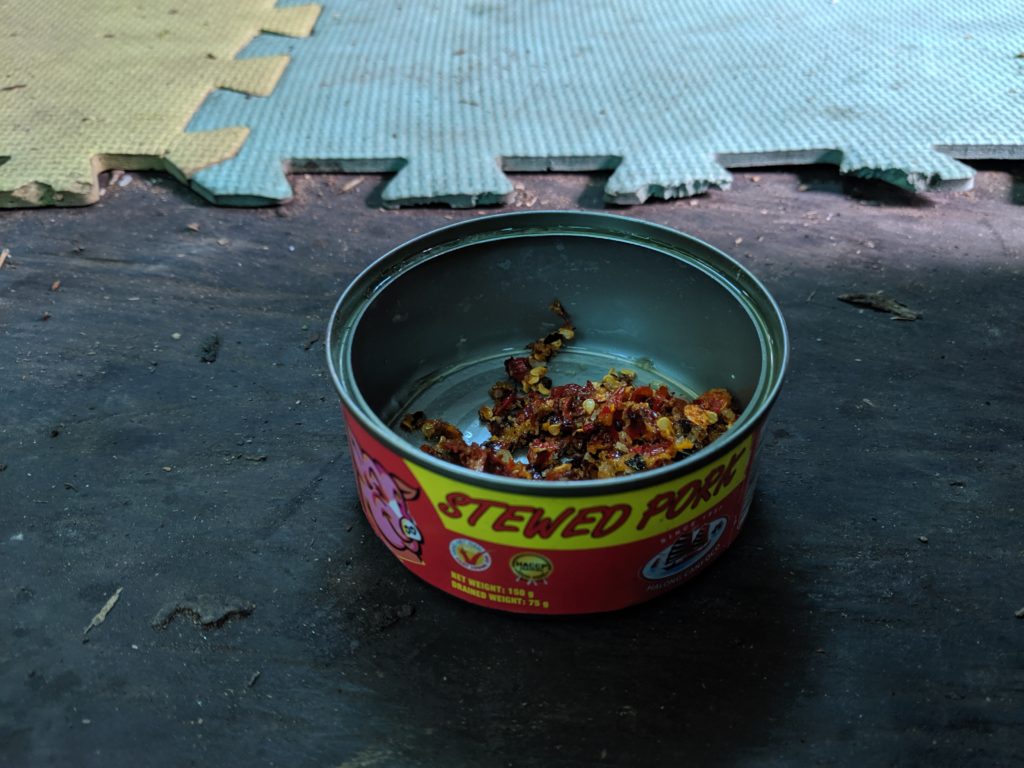
That afternoon we made another few collections on the way back to our main camp including Didymocarpus purpureobracteatus (Gesneriaceae), Arisaema, a Celastraceae shrub and a Vitaceae climber.
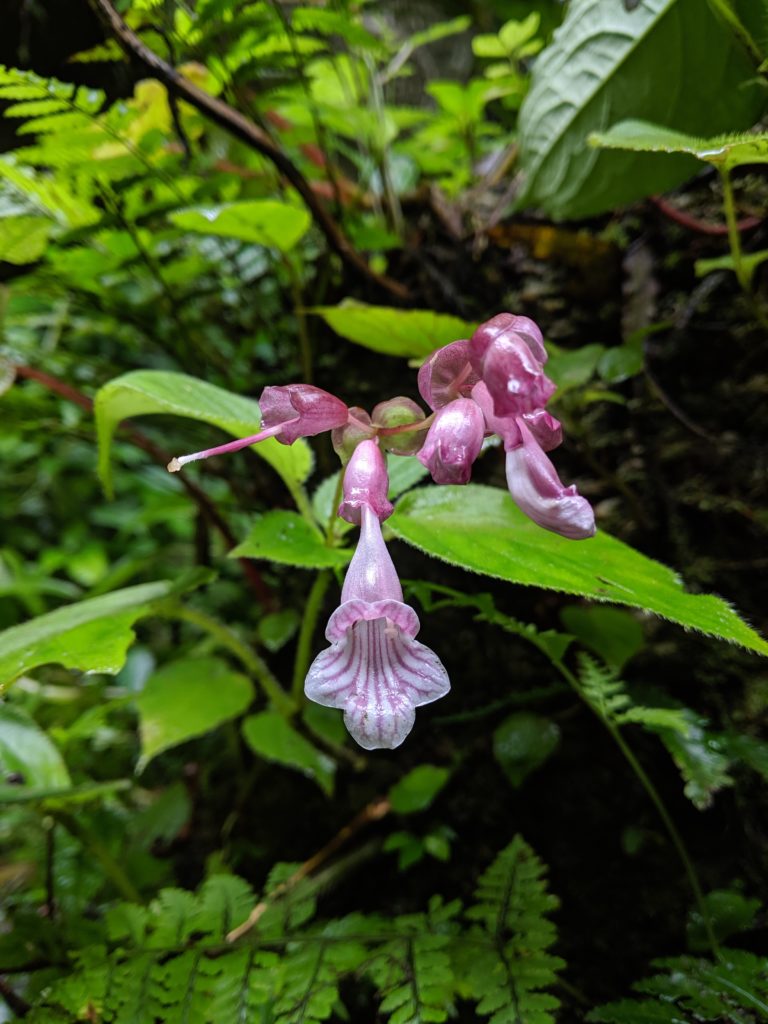
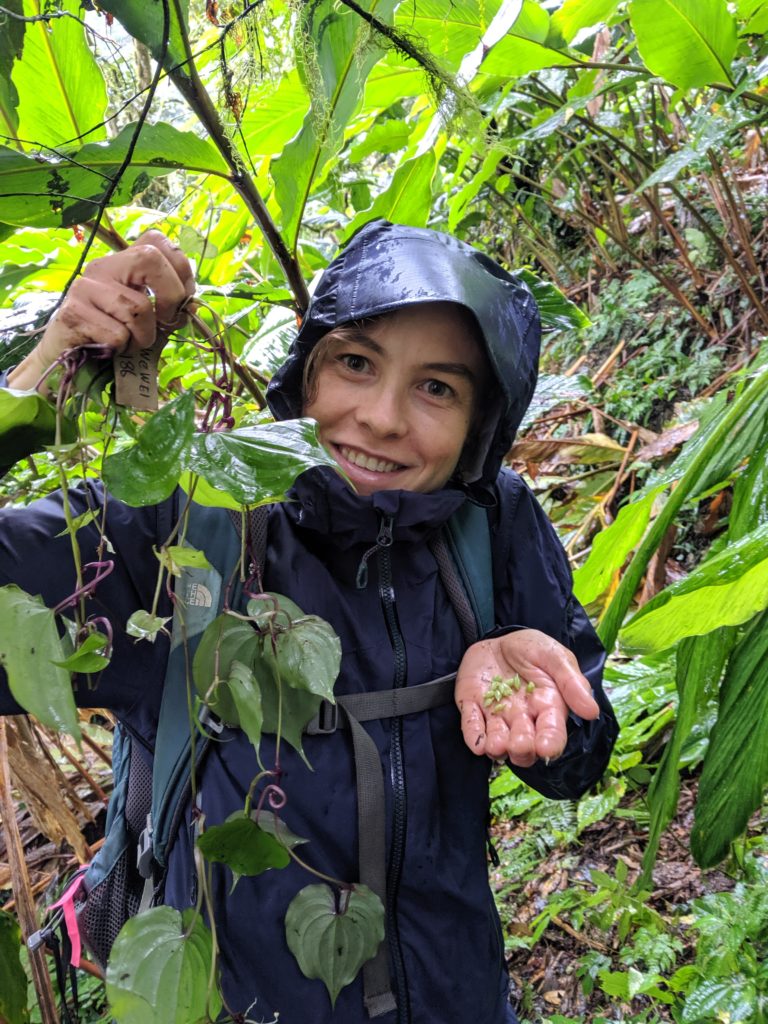
Shortly after we arrived back at our main camp Richard, Andy and the others returned from their trip to the top of the mountain and recounted the tale of their adventures. They had reached the summit and made seed collections of Rhododendron, Camellia, Quercus and Magnolia at high altitude, so all in all were happy, despite the cold, wet night on the mountain in a very small tent.
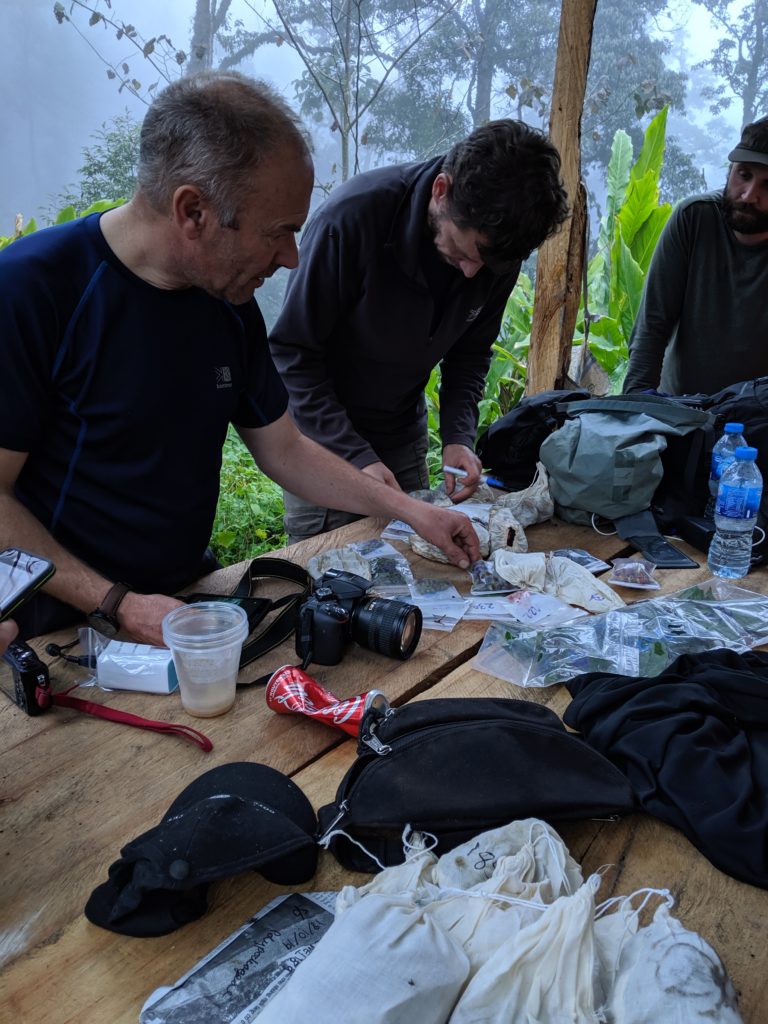
Everyone dried out and de-muddied themselves as best they could and the day’s seed, data and herbariums specimens were checked over. Dinner was prepared and the (now cold) cardamom drier was magically transformed into a dining table for all 14 people! Another huge dinner appeared (including the remaining 2 chickens) a somehow limitless supply of rice wine. There was lots of eating, drinking, laughing and…. singing (but I won’t go into that). And then bed, this time in the shack rather than on the dining table/cardamom drier.
The next morning we were up at 5:20, had a quick breakfast and then off down the mountain to meet the motorbikers who took us back to the village where we had stayed previously. Uoc and his magical minibus had gotten stuck further down the valley. The bikes set off with Richard, our herbarium specimens and equipment whilst Will, Andrew, Angela and I set off on foot. The road was luxuriously easy terrain after the steep, muddy slopes of the forest. Our sense of time and distance had become a bit warped as we realised with relief that even if we couldn’t get the minibus, it would ‘only’ take us 4 hours to get back to Ha Giang on foot. Fortunately, four bikes came to pick us up and we made it back to the minibus in no time. We were back in Ha Giang by lunch time where we spent the afternoon sorting specimens, photos and data, before heading off to our next location in the morning.
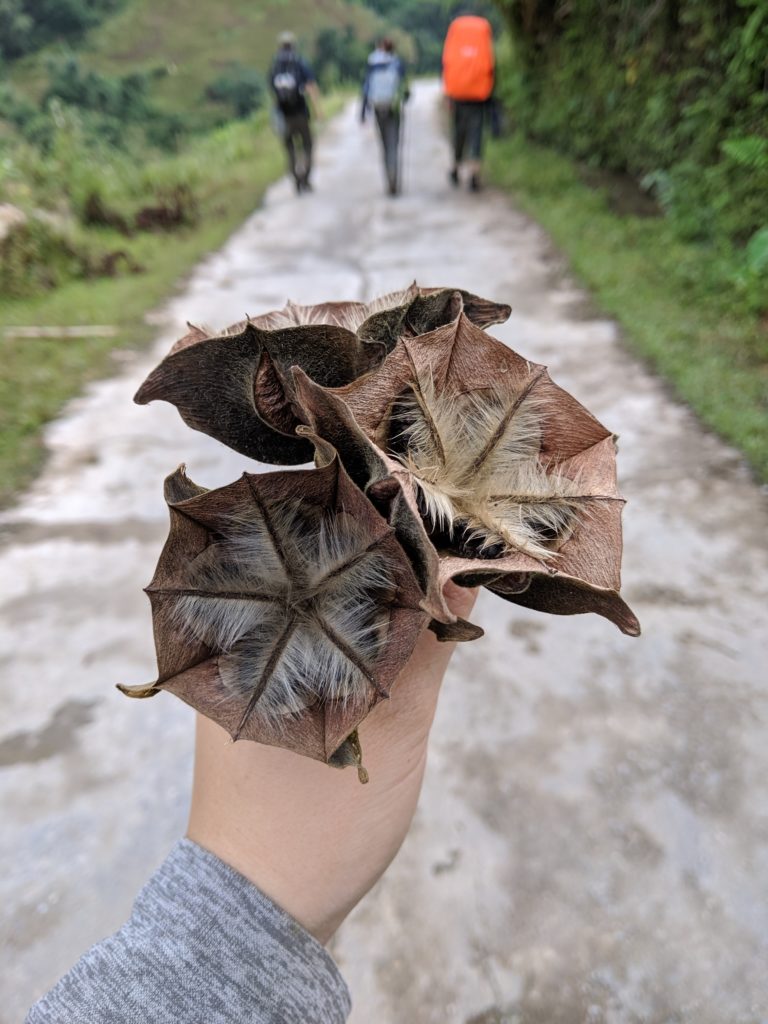
References
Sterling, E., Hurley, M. and Minh, L. (2006) Vietnam: A Natural History. New Haven and London: Yale University Press
Singh, H.P., Parthasarathy, V.A., Kandiannan, K., Krishnamurthy, K.S. (2012) Zingiberaceae Crops. New Delhi: Westville Publishing House

William Campbell
Great account of your trip, treasure these experiences with colleagues who will be friends for life.
Anthony Curry
A very well-documented and interesting coverage of your expedition as was the report of your Fan Si Pan trip.
It is great to see the Welsh National Botanic Garden et al. having a collection and conservation focus on Vietnam and working with the local field officers and forest rangers.
I am sorry for my late post and I hope you and your colleagues continue your exploits in Vietnam. My best regards,
Tony